
When I read Kateřina Tučková’s novel ” The Last Goddess (Žítkovská bohyně) ” with one breath, it started to bother me what is true in the novel and what is fiction ?! At first I even put the book aside, but eventually I came back to it and then just read and read. The book is really great and the topic that Kateřina elaborated is very strong. I like the stories of strong women.
At the end of the reading, I felt a great sense of curiosity. I wanted to know right away who the real Goddesses were, what herbs they used in their magical rituals, and I became really hungry for facts. I immediately bought other books and searched for all kinds of information about Goddess of Žítková and interviews with Kateřina Tučková on the Internet. In Jiří Jilík‘s factual book “The Žítková folk magic (Žítkovské čarování)“, I began to learn facts about the Goddess and Moravské Kopanice. The book was published before the novel and contains more facts. In the book “The Žítková Goddess. Folk Magic in Moravské Kopanice ”by the author Dagmar Dobšovicová Pintířová, I immersed myself in field research, which she conducted for her diploma thesis in the field of ethnology for Masaryk University of the Faculty of Arts in Brno. She was engaged in research in the early 1990s and even became a client of the last Goddess Irma Gabrhelová.

Of course, I longed to see this region. I wanted to know if this area was really so magical, but because I like herbs, I was interested in the local nature and what the medicinal plants are in it. I simply wanted to experience this magical power firsthand, and not just indirectly from books.

“People here cannot plow their fields on the slopes and between the rocks, but only dig. That is why it is called Kopanice. Hard work not only strengthens muscles, arms and the whole healthy body, but they are good in nature. They are balanced, satisfied with little, fused with nature and most importantly happy. You’ll know that in their songs.“
Writer Amálie Kutinová, Gabra and Málinka in a magical land
STARÝ HROZENKOV
Our journey begins in the village of Starý Hrozenkov. Well, it almost didn’t start, because I chose the path to Nový Hrozenkov in the navigation. Fortunately, we soon noticed my mistake. So Old as New, doesn’t it matter?

Two educational trails lead from here, namely the “Moravské Kopanice Nature Trail” and the “Around Hrozenkov Nature Trail“. In the village there is an information board about nature trails. I have to say it’s pretty badly marked here. So we will go for a jump on both paths.

First, the road leads through a forest, which looks a bit scary. Lots of blackberry bushes along the trees. Because it rained a lot yesterday, at times we wade through the mud. This region is located in the hills of the White Carpathians in the very corner of Moravian Slovakia on the border of Moravia and Slovakia. At times, we really get confused.



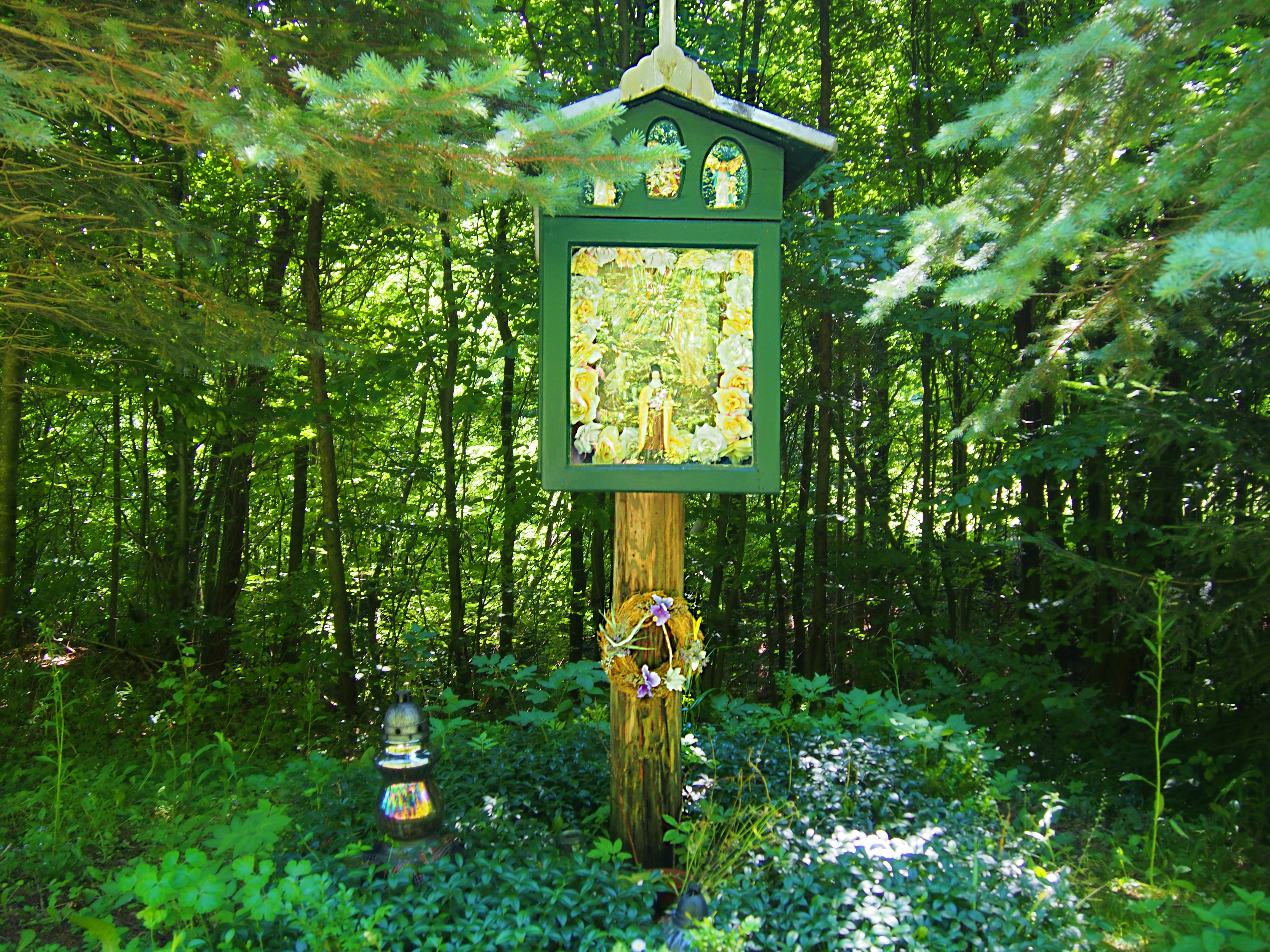
Before you reach Žítková, it will definitely be well spent in the hills. Along the way there is a beautiful stop “Resting place at the Governors (Odpočívadlo u Hejtmanů)“. They have delicious bread, which they bake in the oven according to their own recipe. They add potatoes to the hand-kneaded dough to make the dough pliable and make the bread last longer. They bless each bread before placing it in the oven.


The road leads over the hills, so if you walk like me around noon without a head covering, then know that you get a good dip. At times, it was really a massacre. Gradually we get to the village Žítková.
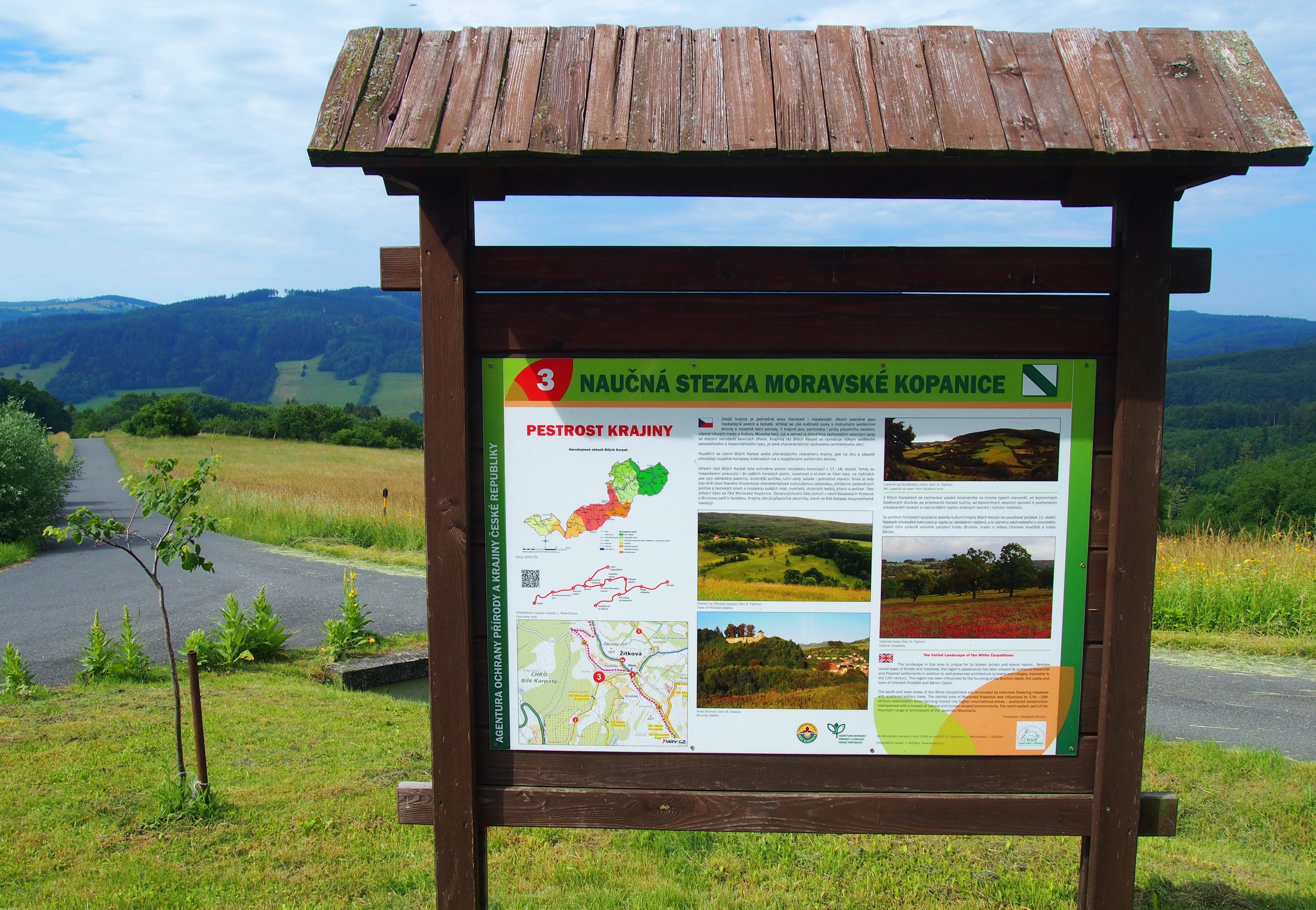


Here is an information board about nature trails and an information center. There is a nice embroidered costume on display. Kopaničáři wore embroidered clothes not only for the church, for the festivities, but also for the robot. They liked to sing, dance, meet and do circles, feasts and festivities.

Along the way, I’m trying to find some old houses, but you know, I’m a pervert for them. Unfortunately, the earthworks with a straw roof can no longer be found, or yes, but they are already unrecognizably reconstructed.
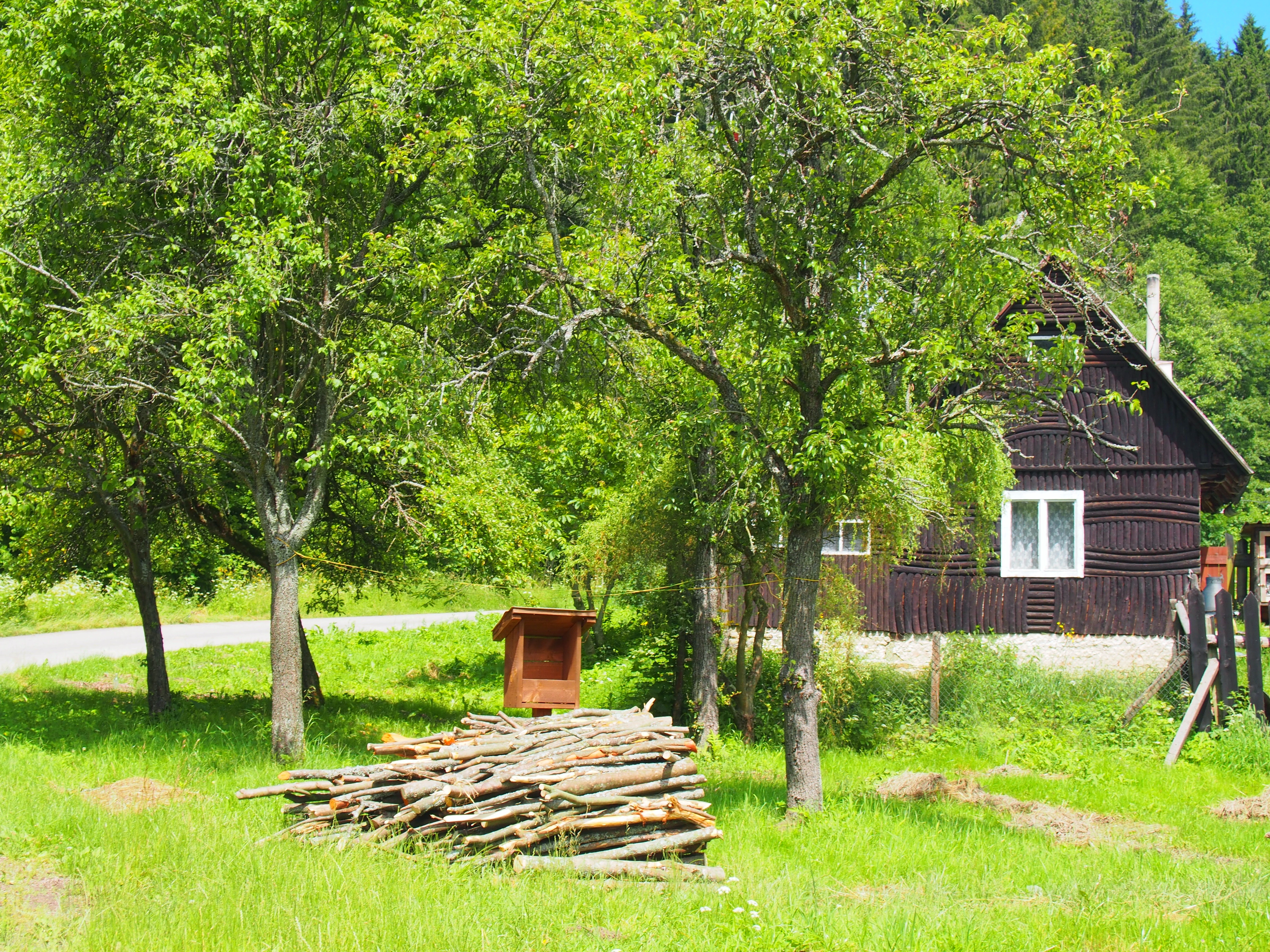



KOPANICE’S HOUSES
For Kopanice’s people, the house was not the most important property, the basis was cattle. The houses were never together, but it was as if people wanted to be a few meters apart. Cereals, oats and buckwheat were very often grown cereals in Kopanice. Also cabbage, legumes, turnips and of course potatoes. The buildings in which the Kopaničářs lived were very simple. The original houses fell apart, because they were built of pigskin – mud and straw bricks, as soon as the roof broke and began to flow into the building, the house actually dissolved with water.

Although the houses of the Goddesses were larger and better than their neighbors, they still did not last long. They were mostly made of clay and fell like houses of cards. That is why today you will not find any house of the Goddess on Žítková. Just the one I was in.

The houses are scattered over the green hills
A BIT OF HISTORY ABOUT MORAVSKÉ KOPANICE WILL NOT KILL ANYONE
There is still uncertainty about the origin of the Kopaničář population. Probably the vast majority of settlers came from the territory of the Kingdom of Hungary, especially from nearby Pováží. That is why their dialect also contains more identical elements with Slovak and did not use the Czech vowel “ř” at all.
The area of Moravské Kopanice allegedly got its name from the fact that hard-to-reach fields on steep slopes could be cultivated by local people only by digging with a hoe – that is why they were called “Kopaničáři” and from there Kopanice. In the past, the inhabitants subsisted mainly on agriculture and as wage workers in the forests, or men went to large cities such as Vienna, Bratislava or Budapest.

At the turn of the 19th and 20th centuries, this region on the Moravian-Slovak border was considerably isolated and also socially backward. A distinctive culture was created here, which was deeply connected with nature.
Kopaničář families used to be very large. Ten to fifteen people lived in one household. Marriages were often arranged within the region, so it was no exception that a woman’s surname did not change her last name. And so the individual genera differed mainly by nicknames.
ŽÍTKOVÁ IS THE PLACE WHERE TIME STOPPED
The village was founded between 17-18. century, following the older settlements around today’s Starý Hrozenkov. The name of the village is allegedly derived from the word “life” (life), which had to be often renewed after the raids of Turks, Tatars and other invaders. It is called “at the end of the world” here, the road leads here only because there is a border with Slovakia. Thanks to its isolation, the first road did not lead here until 1930 and was not electrified until 1948.
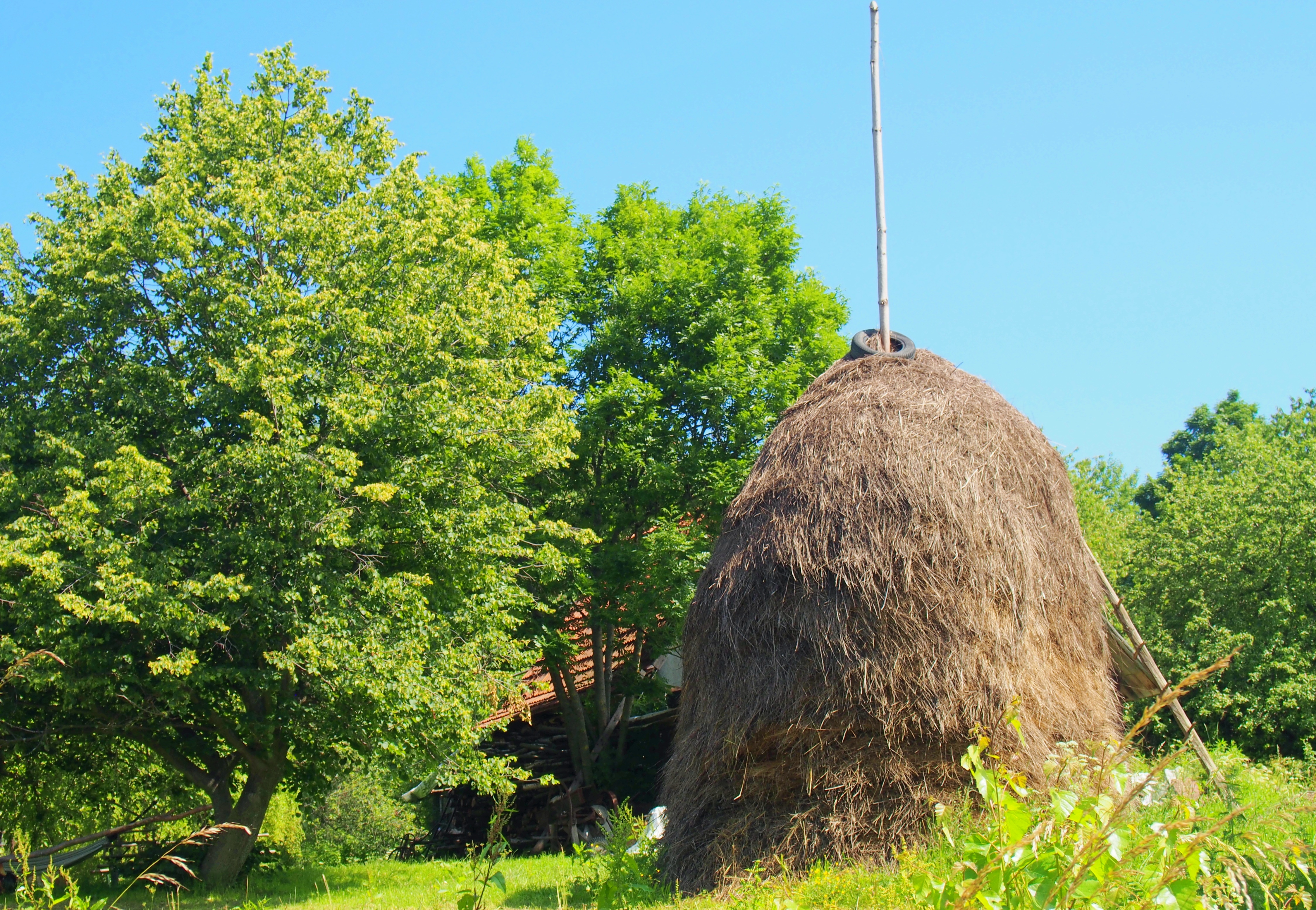
A NEST OF CLEVER WOMEN. AND WHY A GODDESS? BECAUSE THEY ARE WITCHES
The name of the Goddess comes from the fact that they asked God for help in their incantations and healing (“God”). It is said that no one in Kopanice ever took the Goddess as something special, one lived in every other third cottage. But people felt respect for them, they had respect and fear. The Goddesses often healed not only the body but also the human soul. They also did midwives. They were not only able to “heal” and know the herbs, but they also resolved neighborhood disputes, or even cause them. They could also find lost or stolen things. They helped lovers or lovers in all their desires, but they could also separate them. Or the housekeeper went to them if she wasn’t milked by a cow. The Goddess even knew how to enchant a judge to win her client’s lawsuit. And so people from all over Austria, Hungary, came to them with their pains and problems.
Thanks to the Goddesses, Žítková thus became a place whose fame extends far.
The famous Goddesses on Žítková included:
Dorka Gabrhelová
Stará Pagáčena – rozená Gabrhelová
stará Belohlavová – rozená Idesová
Fuksena – Anna Gabrhelová
mladá Kročilka neboli mladá Mišenčena – Kačena Gabrhelová
Struharka – Anna Struhárová
Perchaňa – Anča Stropnická
stará Štrivka – Kateřina Juračková
Švarná – Dora Kotuláčová
Rozmanitová – Kateřina Hodulíková
Chupatá – Irma Gabrhelová – poslední bohyně na Žítkové
WHY DID THE GODDESSES HAVE NICKNAMES?
It was not always easy to know all children born under the same surname. Perhaps that is why at Kopanice they always distinguished each other with funny or derogatory nicknames, which they traveled with them all their lives. Nicknames came into being in all sorts of ways. Whether by distorting one of the previously used surnames, or it was assigned to her completely by accident thanks to the imagination of one of the locals.
WHO COULD BECOME A GODDESS?
“Asking God for help” was inherited from the mother exclusively to the firstborn daughter, if she had the talents to do so. When her daughter refused to learn, her mother’s art disappeared. The mother always taught her firstborn daughter. Due to their abilities, they have often been persecuted, slandered and even tortured in the past.

Church, Communists, Nazis and Project “H”
While some sought them out and relied on their help and advice, others tried to eradicate this folk tradition. Their enemies included the church in particular. Among the fundamental and best-known opponents was the pastor Hofer, who denied any supernatural ability of the goddesses and tried to prove that these were tricks that benefited from superstition. Hofer wrote a book about them called “Goddess on Žítková“. And if you are interested, Vlastimil Hela published the book “Secrets of the Goddesses on Žítková” according to his testimony.
Another main enemy was the communist regime. He was the enemy of the tradition of folk medicine and Godliness. At that time, everything that deviated from the line was different and was different, moreover, difficult to grasp and control. And so the goddesses often ended up in prison or in a madhouse. It is interesting that even during the socialist era, the Goddesses were often invited to hospitals in Uherský Brod, Uherské Hradiště and elsewhere to help dying patients leave this world. It is only thanks to their influence that these people died very calmly, reconciled and without fear.
During World War II, however, the situation was paradoxically different. The goddesses were protected as part of the “H” project (Hexen = witch). This research project was led by Dr. Rudolf Levin. He gathered all the information about witch trials and people with magical abilities. The Nazis were fascinated by the occult. The Goddesses from Kopanice were examined to see if they were women of blood related to the ancient Old German priestesses. On Žítková, there is even a legend among the people that one of the Goddess was to visit Heinrich Himmler, the Reich Minister of the Interior and the Chief of the SS, in person with a request to predict the future. He is said to have had a future foretold by a Goddess. However, the goddesses were innocent.
„ANGELS“
It is said that in order for the Goddesses to take advantage of the moment of surprise, they used the so-called “angels“. If a stranger wanted to find a specific homestead in Žítková, he was forced to find a guide. The locals made extra money in this way. Their task was not only to accompany the person in question, but to talk to him and discreetly learn as much as possible about the purpose of his visit to the Goddess and about himself. The information was then passed on to the goddess.
MAGIC RITUAL
The Goddesses lied out of wax and according to the various shapes he acquired in cold water, they guessed who stole what, where it was hidden, with whom he shared, etc. The Goddess felt all his twists and read the diagnosis, advice and future from her customers.
“Tell me wax, righteous holy truth, truth …”
In addition to the wax, the Goddess needed a mug in which to melt, a vessel of cold water into which the dissolved wax was poured, and vegetables (herbs). Read water – water that is used in every magic ritual. She pours it into a tin pot designed only for this purpose. She then chants and throws hot melted beeswax into the read water and throws it into it, from the casting of which he reads the future to his clients.
However, it was not just any water, it was drawn from the confluence of streams, and it was believed to have healing effects. The Goddesses used to macerate various herbs into it, and there were also embedded carbons. The water treated in this way was then used not only for washing, but also internally.
After the wax gave her a diagnosis, the Goddesses prescribed medication, usually a decoction of medicinal herbs. They immediately also supplied the sick, as they were well-known herbalists.
GOD’S APATHETIC
It was far from Kopanice for the doctor (individual homesteads were distributed throughout the landscape and no roads led to them and it was a problem especially in winter). The nearest doctor was in Bojkovice, which was a 12 km walk. People had nothing to pay for and the patient would probably die in a car during a very bad journey. People in a landscape isolated from the rest of the world were slowly getting rid of distrust of modern medicine. And that is why folk medicine was kept here.

The enchanting beauty of Kopanice

WHICH HERBS WERE USED IN THE TREATMENT AT KOPANICE?
Herbs were collected according to the season. Some herbs are collected in the spring, some in the summer, but most often collected on St. John. They had to be collected at night, and some herbalists had to collect them in silence. It seems like a superstition, but it probably had a meaning. Some plants have the most effective drugs right at night. And when someone wanted to make a Goddess on purpose, he said, “Help the Lord God,” while collecting herbs. She had to answer, and when she answered, the plants lost their effect. It was such a defense against being enchanted.

The Goddesses have always had dried herbs at home and could advise on what to help. But basically almost every woman here was able to collect countless herbs, which of course she knew and was able to use with confidence.
The apathy of the Goddess could not miss:
St. John’s wort – this is a lover, the boys took it during courtship. They stabbed him in the boot for good luck
Horsetail – an herb of youth and people over 40 should drink it every day
Krušinka – she grew everywhere. She was going to drink the cattle for a drink
Rapeseed – it was healing, it had to be remembered to have enough for the winter.
Other herbs that were collected were, for example, coltsfoot, primrose, nursery, lungwort, hawthorn flower, elderflower flowers and berries, fragrant marshmallow, motherwort, radish, valerian and others. Many herbs were then given magical powers.
Herbal potions and teas were recommended for drinking. It was often necessary to macerate the herb in “early watercress” or in brandy. Sometimes the dried mixtures were burned and the patient “smoked” (smoked) them. Other times, the mixture was put in a bath, applied to a sore spot, etc.
It’s just a fraction of the beauty that grows in the meadows, I haven’t seen such diversity for a long time. It’s really beautiful. I wish it wasn’t such a uniqueness.

The Hotel Kopanice, built in the 1970s, was originally a boarding school where children from the surrounding areas lived for a week so that they would not have to tread hills every day. They wouldn’t even get to school in the winter.

The old school is then changed to the Žítková boarding house.

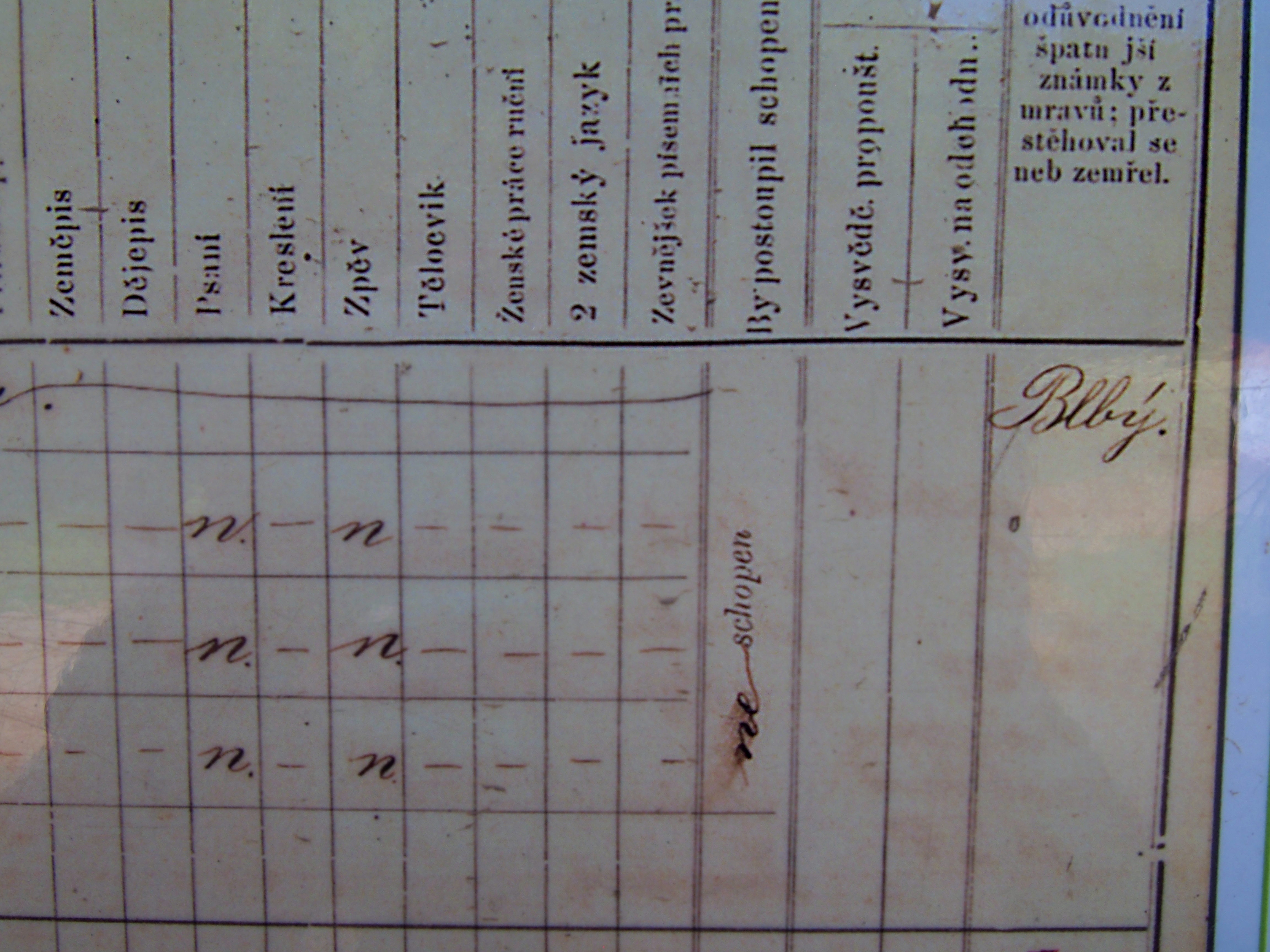
THE HOUSE OF THE LAST GODDESS IRMA GABRHELOVÁ
There is still a cottage in the Čierná settlement where the last Žítková Goddess Irma Gabrhelová lived, known by the nickname “Boozy”, which she used as well as her mother, who was otherwise called the Goddess Struharka. She came from thirteen children. She married when she was twenty-five. She and her husband had seven children. Irma Gabrhel was a widow when she was sixty-eight and has lived alone in the cottage ever since. She died at the age of ninety-seven. The phenomenon of the Goddesses also left with her.

The owner bought the house in 2005 without knowing its history. His wife comes from Žítková, so they were looking for a cottage to buy. They put the house together exactly according to the original floor plan, long before crowds of tourists began to flow here. The building was relatively rich and modern for the local conditions of the time.
It is not allowed to take photos, shoot, record in the house, it could break the magic of the place. Even the Goddesses didn’t like it when someone took pictures of them. and mainly for this reason – strong energy. The owner also tells a story about filmmakers from television who came to the building, but they felt sick and stopped shooting. So I only have photos from the outside, I only have memories from the inside. There is a very noticeable “genius loci” (spirit of the place). The place has retained the respect that this place has preserved so far even after the departure of its owner. It is said that the power lines of the past and the future intersect here.
Recently, two ancient buildings moved into the house from the surrounding hills, modified them and now show them to tourists as typical dwellings.

But even so, I’ll try to show you what’s inside. The house has 2 living rooms – kitchen and bedroom (it was a luxury), in the stable 2 cows and horses (great wealth), goat, hen and pig. The backyard is nice, on the sides are ancient benches for tourists. We can pour water into a cup from a tap in a stone wall. It is said that it is water that transmits information. It’s terribly hot, the sun is shining like crazy, so I welcomed the cold water. What interests me most is Irma’s cuisine. There are stoves on which the wax melted, a table on which fortune tellers. The bedroom has a renovated chest, wardrobes, bed and cradle. There are holy pictures on the wall. Everything is decorated with curtains and bedspreads with classic kick embroidery. The embroidery comes from the owner’s wife. There is also an old costume that the owner got. It radiates special energy from everything. The owner says that none of the locals would ever sleep in a similar building, he is afraid.
He also says that Irma is not here physically, but he is definitely watching us. And I believe that, because when the owner rang the bell at the end, an inexplicable chill ran all over my body. I have respect!


In front of Irma’s house there is a wooden bell tower, which was built by the current owners.

Near the Irma house there is a family mountain farm – sheep farm U kapličky. Here we find a beautiful and charming newly built log cabin with a characteristic straw roof. They sell excellent capreses with sheep cheese, spears and excellent thyme lemonade.
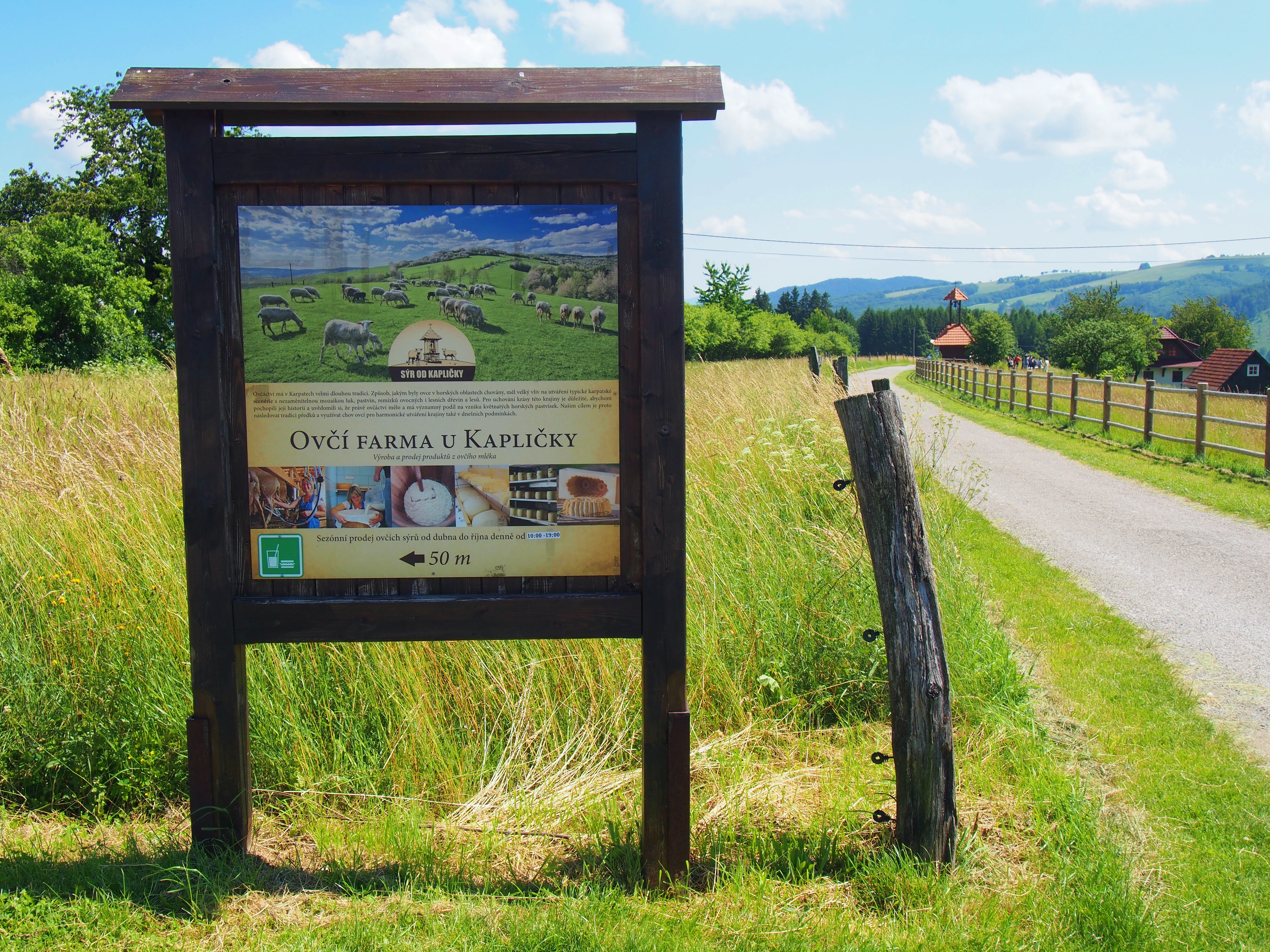

On the way back to Starý Hrozenkov we go down a steep hill. No wonder, at the end of her life, Irma preferred to stay here and not go down into the city much.


We are slowly saying goodbye to Starý Hrozénkov, but we still want to visit another place along the way.
KOMŇA
It is assumed that Komňa was named either according to the type of soil that occurred at the site (lumpy ground) or according to its location on the side. The chimney is the opposite of the plane. A lot of cattle have always been kept here. How else to explain that this village was a well-known bastion of artisans who pinch animals throughout Europe.


Komňa is located near Světová u Bojkovic, where the castle lord was allegedly the real father of the teacher of nations – the nobleman Václav Tetaur from Tetovo. It is said that his son Jeníček, who later adopted the ecclesiastical name Amos and gently calls it Comenius today, paid for schools and studies. Who knows how it ever was.
“The goal of education and wisdom is for one to see before one a clear path of life, to walk carefully along it, to remember the past, to know the present, and to foresee the future.”



The trip to the White Carpathians was very nice and I have a new beautiful collection of photos from it. I will definitely be back here again. And as we were told, Irma Gabrhel’s house is slowly becoming a place of pilgrimage.
Let my article be an inspiration for you and a tip for a nice trip.
P.S .: I drew information from the book Žítkovská bohyně. Folk magic in Moravské Kopanice by the author Dagmar Dobšovicová Pintířová, who conducted field research. Also from the book Žítkovské čarování with the subtitle The True Story of Žítkov Goddesses by Jiří Jilík.
If you liked the article, I’ll be happy if you share it or leave some comments. 🙂 I would also want to invite you to join me on Instagram and on Facebook.


I have just found out that my great, great grandfather Jozef Juraczko was born in Zitkova in 1830. He came to Poland in 1850s. Supposedly he was of Hungarian heritage. He came to Poland with knowledge of healing animals and generation after generations skills were transferred from father to son. My grandfather was a vet who helped a lot of Polish partisans thanks to his skills. He had extensive knowledge about herbal medicine. So I guess it was not only women who had the knowledge. One of the names of the healers sounds like we might have been related – Katerina Jurackova. Thank you for the article it has explained a lot about my ancestor. I hope I will be able to visit Magic Zitkova some day.
Well, that’s fantastic that you found out so many interesting things. You should definitely visit Zítkov, it’s a truly magical place. The atmosphere is amazing, especially if you visit the last house. And if your great, great grandfather Jozef Juraczko also healed it is quite possible. I think there was just more talk about women. But thank you very much for this comment, it made me very happy. Sylva